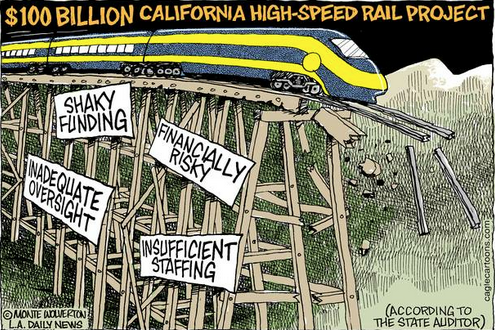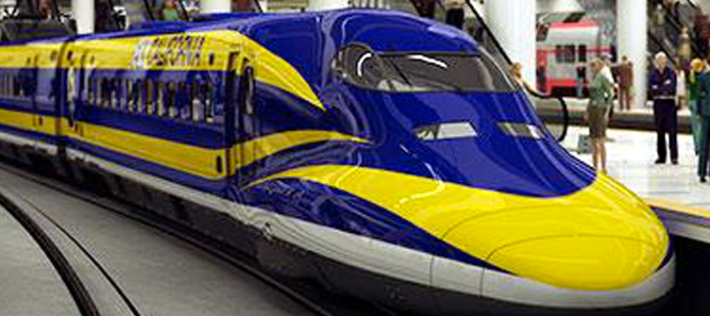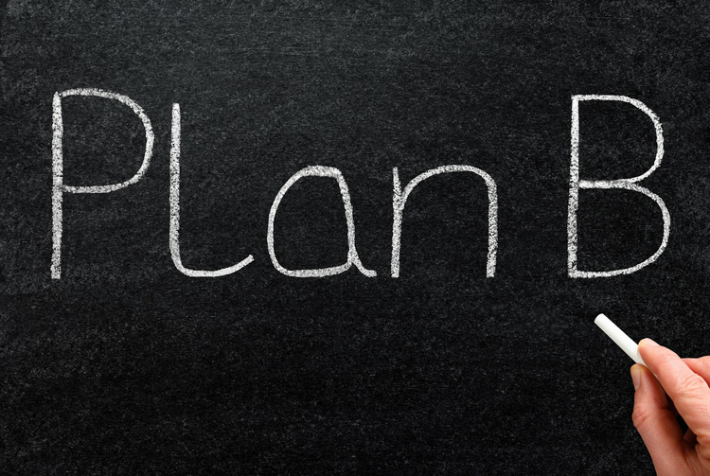Battle Lines Drawn in High Speed Rail Vote
11:56 AM PDT on June 27, 2012
Later this week, the plan to build a High Speed Rail line connecting Los Angeles and San Francisco faces a crucial vote in the California legislature. Governor Jerry Brown asked lawmakers to release $2.7 billion of the $6 billion in bonds passed by California voters in 2008 for High Speed Rail. Combined with $3.3 billion in federal funds, the allocation would build 130 miles of High Speed Rail in the Central Valley.
Currently there are three competing visions for High Speed Rail in the Golden State. For simplicity's sake, we'll refer to the three as: The Governor's Plan, Plan B, and No Rail. The Governor's Plan refers only to his request to spend $6 billion in the Central Valley, not the entire route. To help you keep track of who is saying what over the next several days, Streetsblog presents your High Speed Rail scorecard.
The Governor's Plan:
The Plan: The Governor's Plan would create a high speed rail network connecting Los Angeles and San Francisco. The plan would also pay for the electrification of existing Caltrain and Metrolink rail so these tracks could be used for high speed rail, but would also speed up local service for thousands of commuters. The new long-term plan would spend $68 billion, create over 500 miles of High Speed Rail and 100,000 "job years." The first leg of the plan, or the Governor's Plan as we're calling it, begins with 130 miles in the Central Valley.
Why the Plan Could Happen: The Obama Administration clearly stated that it will not allow funds set aside for High Speed Rail to be used for other projects. The new business plan released this Spring has drawn praise not just from party loyalists easy to please the governor, businesses that would stand to benefit from the construction and unions desperate for work; but also from transportation reform groups such as Move L.A. in Southern California and Transform in Northern California.
Why It Might Not Happen: The CA High Speed Rail Authority just experienced four rough years in the press with most of the wounds self-inflicted. The current plan might make sense, but past plans angered the public at-large. A recent poll by the Los Angeles Times and USC found that a clear majority, 55%, would vote against High Speed Rail if it were on the ballot this year.
Even supporters of California High Speed Rail admit that the plan voters approved in 2008 is very different than the one proposed by the Auhtority and backed by the Governor today. The 2008 plan cost $45 billion and was supposed to fund 800 miles of rail connecting San Diego to Sacramento. The current plan, while an improvement over an interim $100 billion plan, is a lot more expensive and covers roughly 300 less miles. To make matters worse, the current plan relies on bonding against future operations revenue, meaning it will be generations before High Speed Rail, without another major government funding boost will reach Sacramento or San Diego.
Even if the legislature lines up, there's also the small matter of the five existing lawsuits against the project.
Lastly, the plan is lambasted by fiscal conservatives who claim that the state simply can't afford the line in today's economy.
For more: The most consistent voice in favor of this proposal is the California High Speed Rail Blog by Robert Cruickshank. Cruickshank is not affiliated with the High Speed Rail Authority or any political faction. Cruickshank recently posted a link to the national "People for Trains" website's action alert urging California legislators to support the Governor's plan. Transform and Move L.A. are linking to the Action Alert by Californians for High Speed Rail.
Plan B
The Plan: Plan B was devised by Democratic State Senators Alan Lowenthal (Long Beach), chair of a special committee on High Speed Rail, and Mark DeSaulnier (Concord), chairman of the Senate transportation committee. It would dramatically shift the early state funding away from the middle of the route towards its northern and southern terminus. Specifics of the plan have not been widely discussed, but the Sacramento Bee got a breakdown from some insiders:
- A $2 billion tunnel through downtown San Francisco to bring commuter rail service - and, eventually the bullet train - into the city's new Transbay Transit Center from the Caltrain station more than a mile away.
- $1.5 billion in Los Angeles-area rail improvements, including a redesign of Los Angeles Union Station's rail access and construction of rail overpasses. Together, the projects would speed rail service for hundreds of Amtrak and Metrolink trains each day and end chronic traffic bottlenecks.
- A $1.5 billion Central Valley bullet train line between Fresno and Madera - but with no immediate connections to Merced or Bakersfield.
Why the Plan Could Happen: To pass the Senate, the Governor's funding request needs 21 votes. Assuming all Republicans vote against the proposal, only five Democrats would have to vote against the plan for it to fail. Lowenthal's and DeSaulinier's no votes narrow the Governor's "margin of error" in the Senate. If the Governor's plan fails, Plan B could well be considered better than nothing.
Why the Plan Probably Won't Happen: There's been little popular support for the plan, because nobody really knows about it. The mayors of San Francisco and Los Angeles are lined up behind the governor's plan.
There's also a good chance that if this plan were to pass the Senate and gain the support of the Governor and Assembly, it wouldn't gain the support of the Obama administration which allocated $3.3 billion for a specific high speed rail corridor.
The Federal Transit Administration has not weighed in on the proposal, but when governors in Wisconsin and Florida tried to change what federal High Speed Rail dollars would pay for, the administration pulled the funding. Spokespeople for the California High Speed Rail Authority have also stated that Plan B wouldn't pass federal muster.
For More: There isn't a lot of information or support for Plan B on the internet yet.

The No Rail Plan
The Plan: If the legislature doesn't deny funding for the Central Valley portion of the line, then a group of small government activists are trying to get the signatures for a repeal of the 2008 ballot proposition that funds California High Speed Rail. Based on current polling, such a ballot proposition would likely pass.
Why the Plan Could Happen: It's hard to see the Governor push for a controversial vote he might not win, but stranger things have happened in California.
If the funding plan does pass the legislature, then the people pushing for the ballot initiative will need 504,760 signatures of registered voters, or 5% of the total number of votes in the last gubernatorial election, to get the funding reversal on the ballot. While that's a tall task, the vocal support and signature gathering effort of Southern California radio hosts "John and Ken" could gather many of the signatures themselves. The KFI talk show hosts have over 1.1 million listeners on the average weekday, the highest for a local talk show in the country, and are hosting their first signature gathering event in Anaheim later today. To call "John and Ken" listeners politically motivated would be an understatement.
A statewide effort is also underway by Re-Vote Rail. While their website has all the tools one needs to gather signatures on their own, it seems the group doesn't have the funding to launch a signature gathering effort on their own. The signatures are due in mid-July.
Why the Plan Probably Won't Happen: 504,760 is a lot of signatures. Without a well-funded, coordinated campaign it is unlikely that they will make the deadline for a ballot initiative.
However, that might not be the main reason for the signature gathering campaign. "John and Ken's" rally, and others like it, are making a lot of anti-High Speed Rail noise at the same time the legislature is considering the unpopular measure.
Stay in touch
Sign up for our free newsletter
More from Streetsblog Los Angeles
Metro Committee Approves 710 Freeway Plan with Reduced Widening and “No Known Displacements”
Metro's new 710 Freeway plan is definitely multimodal, definitely adds new freeway lanes, and probably won't demolish any homes or businesses
Automated Enforcement Coming Soon to a Bus Lane Near You
Metro is already installing on-bus cameras. Soon comes testing, outreach, then warning tickets. Wilshire/5th/6th and La Brea will be the first bus routes in the bus lane enforcement program.






